[email protected] Ransomware Description
[email protected] Ransomware is a file-encrypting program which uses RSA encryption algorithm to encode the files stored on victim's machine. It encrypts the crucial file types and stored all the enciphered files in one folder that can be identified as “emcrypted.rar” which is password protected. After encoding the victim's files, the ransomware displays a ransom notification, contained in the file “unlock files.txt”. Sadly, it is not possible to decode the files enciphered by this virus without accessing decryption key, which the cyber extortionists responsible for this malware attack hold hostage until the victimized computer users pays the demanded ransom money.
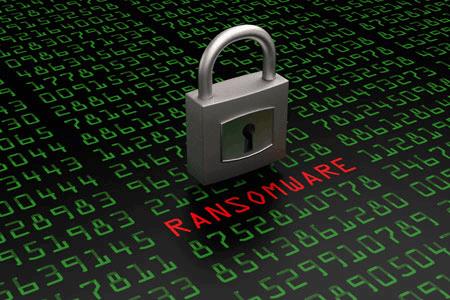
Infected Users Should Abstain From Paying Ransom Money
According to the ransom note displayed by [email protected] Ransomware, it instructs the victims to contact the criminal hackers with the help of provided specific email address ([email protected]) in order to receive the instructions for ransom payment. This threat demands 10 Bitcoins as a ransom fee (which is approximately equal to $13569 at the current exchange rate), which making it quite expensive to restore the files from the malware attack. However, it is not a smart choice to pay the asked ransom amount, because there is no guarantee that the cyber hackers responsible of this malicious ransomware attack will keep their word and deliver the exact decryption key.
In case, if you pay the ransom money demanded by the developers of [email protected] Ransomware, it is equally possible that the con artists will turn around and may ask for more money in the form of bitcoin. Sadly, since it is impossible to recover the system files without having a right decryption key, one of the best method that victimized machine users can use is to retrieve the crucial files by using backup copies. In fact, this is the best prevention method when dealing with ransomware attacks. Although, having adequate backup copies of all the vital computer files on an external memory device can help to recover from [email protected] Ransomware attack after its complete removal.
How the threats like [email protected] Ransomware work?
Malicious threat like this one are becoming very popular online. Most of the file-encrypting ransomware infections are very similar to each other, because they may recycle the code from one virus to another. Virtually, the single practical differences between these threats are the size of ransom money demanded from the victimized PC users. Besides, the most common distribution methods used for spreading the malwares like [email protected] Ransomware are spam email attachments, freeware programs, files distributed via P2P networks, bogus software updates and hacking victim's machine directly. However, make sure that your system is protected adequately with a reputable and trustworthy anti-malware scanner and that you exercise caution while dealing with the possible virus sources that can help you to prevent the infiltration of such nasty threats and its attacks.
Free Scan your Windows PC to detect [email protected] Ransomware
Remove [email protected] Ransomware From Your PC
Step 1: Remove [email protected] Ransomware in Safe Mode with Command Prompt
- First of all disconnect your PC with network connection.
- Click restart button and keep pressing F8 key regularly while system restart.

- You will see “Windows Advanced Options Menu” on your computer screen.
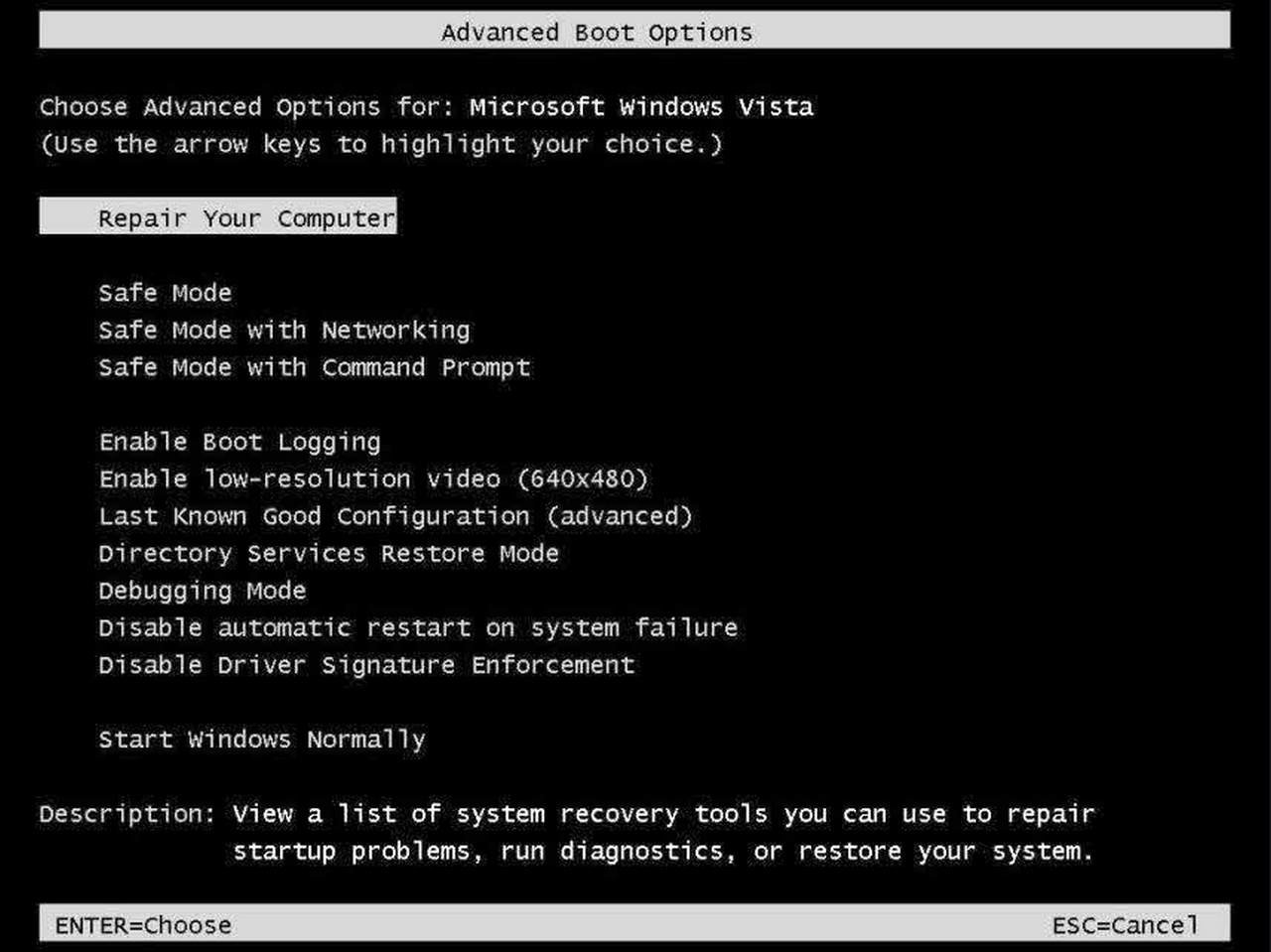
- Select “Safe Mode with Command Prompt” and press Enter key.
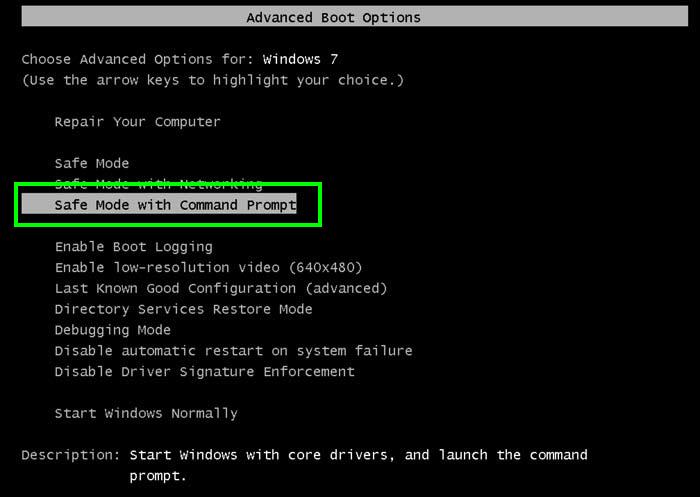
- You must login your computer with Administrator account for full privilege.
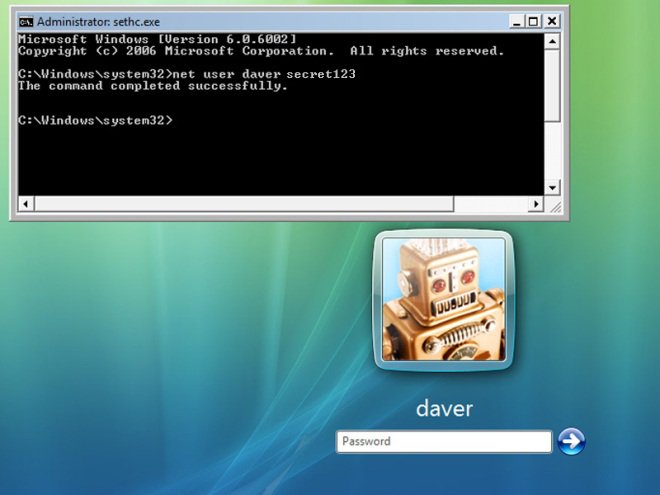
- Once the Command Prompt appears then type rstrui.exe and press Enter
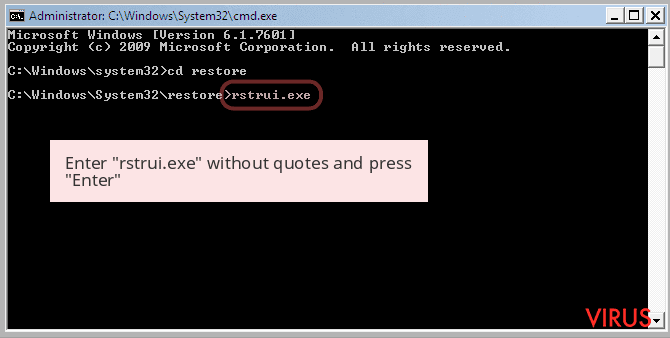
- Now follow the prompts on your screen to complete system restore.
Step 2: Remove [email protected] Ransomware using MSConfig in Safe Mode:
- Power off your computer and restart again.
- While booting press the “F8 key” continuously to open “Windows Advanced Options Menu”.

- Use the arrow keys to select “Safe Mode” option and press Enter key.

- Once system get started go to Start menu. Type “msconfig” in the search box and launch the application.
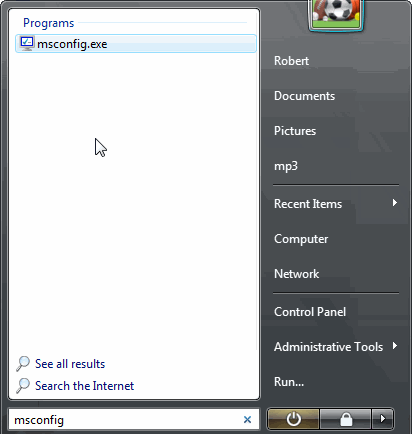
- Go to the Startup tab and look for files from %AppData% or %Temp% folders using rundll32.exe. See an example below:
C:\Windows\System32\rundll32.exe C:\Users\username\appdata\local\temp\regepqzf.dll,H1N1
- Disable all the malicious entries and save the changes.
- Now restart your computer normally.
Step 3 : Kill Malicious Process Related To [email protected] Ransomware
- Press Alt+Ctrl+Del buttons together.

- It will open the Task manager on your screen.
- Go to Process Tab and find [email protected] Ransomware related process.
- Click the End Process Now button to stop the running process.
Step 4 : Remove [email protected] Ransomware Virus From Registry Entry
- Press “Windows + R” key together to open Run Box.

- Type “regedit” and click OK button.

- Find and remove [email protected] Ransomware related entries.
HKEY_LOCAL_MACHINE\SOFTWARE\Microsoft\Windows\CurrentVersion\Run
HKEY_LOCAL_MACHINE\SOFTWARE\Microsoft\Windows\CurrentVersion\RunOnce
HKEY_LOCAL_MACHINE\SOFTWARE\Microsoft\Windows\CurrentVersion\RunOnceEx
HKEY_LOCAL_MACHINE\SOFTWARE\Microsoft\Windows\CurrentVersion\RunServices
HKEY_LOCAL_MACHINE\SOFTWARE\Microsoft\Windows\CurrentVersion\RunServicesOnce
HKEY_LOCAL_MACHINE\SOFTWARE\Microsoft\Windows\CurrentVersion\Policies\Explorer\Run
HKEY_CURRENT_USER\Software\Microsoft\Windows\CurrentVersion\Run
HKEY_CURRENT_USER\Software\Microsoft\Windows\CurrentVersion\Runonce
HKEY_CURRENT_USER\Software\Microsoft\Windows\CurrentVersion\RunServices
HKEY_CURRENT_USER\Software\Microsoft\Windows\CurrentVersion\RunServicesOnce
HKEY_CURRENT_USER\Software\Microsoft\Windows\CurrentVersion\Policies\Explorer\Run
Now hopefully you have completely removed the [email protected] Ransomware virus from your computer. If you are still get ransom message from the threat or unable to access your files, then it means that virus still remain into your computer. In such situation you don’t have any other option except removing this virus using any powerful malware removal tool.
Whereas if you have any backup of your infected or encrypted files, then you can also reinstall your Windows OS. This will erase all your files and data as along with the [email protected] Ransomware infection. You will get a completely empty computer system with no files. Now you can use your backup to get your files. If you don’t have any backup then using malware removal tool is a better option for you.
If you have any query or question regarding your computer, then you can easily ask your problem to our experts. Go to the Ask Any Question page and get the answer for your query directly from out experts.




